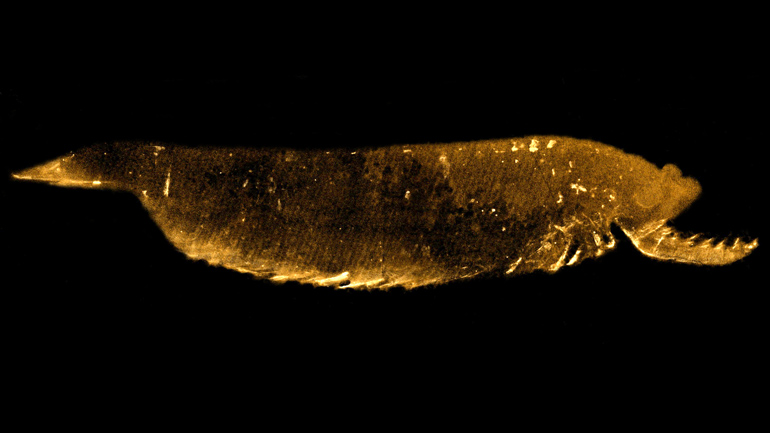
A team from the University of Leicester, Yunnan Key Laboratory for Palaeobiology and the Institute of Palaeontology at Yunnan University, Chengjiang Fossil Museum, and the Natural History Museum in London, have redescribed a unique fossil animal from rocks nearly 520 million years old that fills in a gap in our understanding of the evolution of animals known as arthropods.
The animal, Kylinxia zhangi, simply shouldn’t be there if creationists claims were true. It is from almost 520 million years before Earth and the life on it was created and its one of those 'transitional' species showing characteristics of not just two different species, but two entire classes of the arthropod phylum. As such, of course, they are evidence of the evolutionary common origin of those two classes within the major taxon.
They're the sort of species that would have any creationist scratching their heads and declaring, "But they're still er... insects.... er... crustaceans"! before hurriedly redefining 'kind' as a major taxonomic class that includes hundreds of thousands of disparate species with different appendages and body plans of the sort that the same creationist will assure you can't have evolved because 'macro-evolution', i.e., evolving new appendages, body plans, etc., is impossible, while 'micro-evolution, i.e., evolution within the same 'kind' is now perfectly possible. 25 years ago, it was impossible until they realised no Ark could be big enough to contain 2 (or 7)of each known and extinct species.
So, the standard knee-jerk response will be necessary: the scientists lied; the scientists got the dates wrong; the dating techniques are flawed; the scientists are part of a world-wide satanic conspiracy to turn people away from Jesus - even the Chines scientists for whom Jesus and Satan are as mythical as are the Chinese Taoist gods to an American Christian fundamentalist.
But, leaving aside the arrogant cultural chauvinism in assuming the locally popular god in America is the only real one, I wonder how many creationists can explain why the dating methods used were wrong by many orders of magnitude, returning dates in the hundreds of millions of years when the real date should have been about 4,000 years.
The find and its significance is explained in a University of Leicester news release:



































